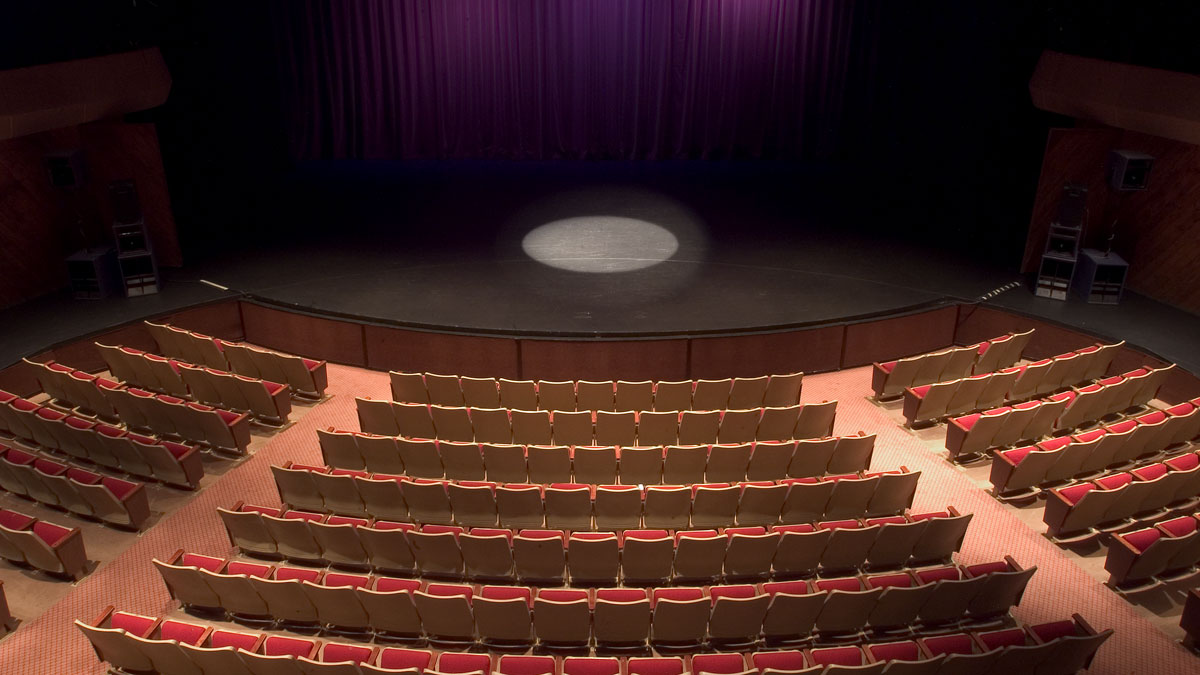 Supplied
SuppliedThe Myer Horowitz Theatre: a 720-seat concert hall in the Students’ Union Building which opened its doors in 1967. Over the years, it has hosted such musical acts as Hannah Georgas and Rufus Wainwright, and stand-up comedians such as Norm Macdonald and Lars Callieou. Groups on campus host shows at the theatre year after year; the Orchesis Dance Performance Group has their Dance Motif Show in the theatre, and since 1995, law students have presented a law-themed variety show which donates all its proceeds to a local charity or not-for-profit.
But the theatre has begun to show its age. The seats are cramped, and their padding has worn down over the decades. The accessibility lift used to carry those with mobility restrictions is very small, generally only permitting one passenger and the operator at one time. And while there are a couple of seats saved for wheelchair users and their attendants, it requires using a couple of extra doors and going through a backstage area to access them.
Front of house issues aren’t the only deficiencies in the theatre. The backstage layout, which may have worked well when it was built, now seems awkward and can hamper performers who need to get to and from stage in a hurry. The audio/visual hardware and wiring in the theatre are obsolete. Washroom facilities are too small for larger performances, and lack all-gender washrooms which have been added to other parts of SUB.
So the theatre needs to be renovated and updated. But why should you, a student who does not, can not, or will not go to any performances in the Horowitz contribute any money to it?
While campus-affiliated individuals both hold and attend events in the theatre, many more non-campus-affiliated individuals or groups also hold and attend events in the theatre. It’s these non-student sources of revenue that the SU should be pursuing to alleviate the financial burden being placed on students.
In 2017, the theatre had net earnings of just under $157,000. In 2018, this had dropped to just over $64,000. Despite the large drop, the theatre has remained one of the more profitable SU businesses, behind SUBprint and the Daily Grind. And since business revenue makes up over half of Students’ Union revenues, maintaining or increasing the profitability of the Horowitz serves a dual purpose: it allows more campus-focused revenue streams to run more as services than businesses, keeping margins lower than comparable businesses, while also allowing the SU to maintain or potentially reduce the amount of its membership fee.
If the theatre remains in its current condition, not only do we become less and less attractive for those who have never booked the theatre before, but also less attractive for repeat customers. And at 720 seats, the Horowitz serves the demand for a mid-sized venue, one of the few options in Edmonton. The Citadel Theatre is only two years older than the Horowitz and has the Maclab Theatre (705 seats) and the Shoctor Theatre (651 seats), both of which are comparable to the Horowitz but have received sporadic renovations and upgrades over the years.
The U of A’s Timms Centre, which opened in 1992, seats 321 people, less than half of the Horowitz. The Northern Alberta Jubilee Auditorium opened in 1955, but the theatre underwent $91 million in renovations back in 2005. Its main theatre seats up to 2,538 people, over triple the Horowitz’s capacity. The Timms and ‘The Jube,’ while newer or in better condition, may be too small or too large, whereas the Horowitz is just right. Thus, it’s in students’ interests to renovate the theatre so that they can benefit in the long run.
Many have tried and failed to run this football over the goal line, with initiatives like the Student Events Initiative and student spaces levy. But we’re going to need a touchdown soon, or we’re going to be way behind going into the next quarter.




